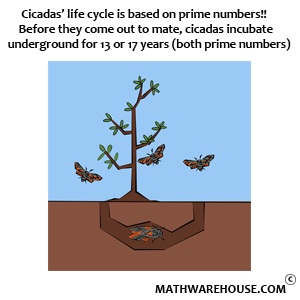Use the formula for the derivative of the inverse sine.
$$f'(x) = \frac 1 {\sqrt{1 - (2x)^2}}\cdot \frac d {dx}(2x) = \frac 2 {\sqrt{1 - 4x^2}}$$
Evaluate $$f'(1/4)$$
$$ \begin{align*} f'(1/4) & = \frac 2 {\sqrt{1 - 4\left(\frac 1 4\right)^2}}\\[6pt] & = \frac 2 {\sqrt{1 - 4\left(\frac 1 {16}\right)}}\\[6pt] & = \frac 2 {\sqrt{1 - \frac 1 4}}\\[6pt] & = \frac 2 {\sqrt{\frac 3 4}}\\[6pt] & = \frac 2 {\frac{\sqrt 3}{\sqrt 4}}\\[6pt] & = \frac 2 1 \cdot \frac{\sqrt 4}{\sqrt 3}\\[6pt] & = \frac 2 1 \cdot \frac 2 {\sqrt 3}\\[6pt] & = \frac 4 {\sqrt 3}\\[6pt] & = \frac{4\sqrt 3} 3 \end{align*} $$
$$\displaystyle f'(1/4) = \frac{4\sqrt 3} 3$$
Use the formula for the derivative of the inverse cosine with the chain rule.
$$ \begin{align*} f'(x) & = \frac{-1}{\sqrt{1 - (x^2 - 3)^2}}\cdot \frac d {dx}\left(x^2 - 3\right)\\[6pt] & = \frac{-1}{\sqrt{1 - (x^2 - 3)^2}}\cdot \left(2x\right)\\[6pt] & = \frac{-2x}{\sqrt{1 - (x^2 - 3)^2}} \end{align*} $$
$$\displaystyle f'(x) = \frac{-2x}{\sqrt{1 - (x^2 - 3)^2}}$$
Use the formula for the derivative of the inverse cotangent along with the chain rule.
$$ \begin{align*} f'(x) & = \frac{-1}{1+(15x)^2}\cdot \frac d {dx}(15x)\\[6pt] & = \frac{-1}{1+225x^2}\cdot (15)\\[6pt] & = \frac{-15}{1+225x^2} \end{align*} $$
$$ \displaystyle f'(x) = -\frac{15}{1+225x^2} $$
Use the formula for the derivative of the inverse secant along with the chain rule.
$$ \begin{align*} f'(x) & = \frac 1 {\left|\frac 3 x\right|\sqrt{\left(\frac 3 x\right)^2 - 1}}\cdot \frac d {dx}\left(\frac 3 x\right)\\[6pt] & = \frac 1 {\frac 3{|x|}\sqrt{\frac 9 {x^2} - 1}}\cdot \frac d {dx}\left(3x^{-1}\right)\\[6pt] & = \frac 1 {\frac 3{|x|}\sqrt{\frac 9 {x^2} - 1}}\cdot \left(-3x^{-2}\right) \end{align*} $$
Simplify.
$$ \begin{align*} f'(x) & = \frac 1 {\frac 3{|x|}\sqrt{\frac 9 {x^2} - 1}}\cdot \left(-3x^{-2}\right)\\[6pt] & = \frac 1 {\frac 3{|x|}\sqrt{\frac 9 {x^2} - 1}}\cdot \left(\frac{-3}{x^2}\right)\\[6pt] & = \frac{-3}{\frac 3{|x|}\cdot x^2\sqrt{\frac 9 {x^2} - 1}}\\[6pt] & = \frac{-3}{3|x|\sqrt{\frac 9 {x^2} - 1}}\\[6pt] & = \frac{-1}{|x|\sqrt{\frac 1 {x^2}(9 - x^2)}}\\[6pt] & = \frac{-1}{|x|\sqrt{\frac 1 {x^2}}\cdot\sqrt{9 - x^2}}\\[6pt] & = \frac{-1}{|x|\cdot\frac 1 {\sqrt{x^2}}\cdot\sqrt{9 - x^2}}\\[6pt] & = \frac{-1}{|x|\cdot\frac 1 {|x|}\cdot\sqrt{9 - x^2}}\\[6pt] & = \frac{-1}{\sqrt{9 - x^2}} \end{align*} $$
$$\displaystyle f'(x) = \frac{-1}{\sqrt{9 - x^2}}$$
Identify the factors that make up the function.
$$ f(x) = \blue{x^{1/2}}\,\red{\arctan 9x} $$
Differentiate using the product rule.
$$ \begin{align*} f'(x) & = \blue{\frac 1 2 x^{-1/2}}\arctan 9x + x^{1/2}\cdot \red{\frac 1 {1 + (9x)^2}\cdot 9} \end{align*} $$
Simplify.
$$ \begin{align*} f'(x) & = \frac 1 2 \blue{x^{-1/2}}\arctan 9x + \blue{x^{1/2}}\cdot \frac 9 {1 + 81x^2}\\[6pt] & = \blue{x^{-1/2}}\left(\red{\frac 1 2} \arctan 9x + x\cdot \frac{\red 9}{1 + 81x^2}\right)\\[6pt] & = \red{\frac 1 2}x^{-1/2}\left(\arctan 9x + \frac{18x}{1 + 81x^2}\right)\\[6pt] & = \frac 1 {2x^{1/2}}\left(\arctan 9x + \frac{18x}{1 + 81x^2}\right)\\[6pt] & = \frac 1 {2\sqrt x}\left(\arctan 9x + \frac{18x}{1 + 81x^2}\right) \end{align*} $$
Evaluate $$f'(1/9)$$.
$$ \begin{align*} f'\left(\blue{\frac 1 9}\right) & = \frac 1 {2\sqrt{\blue{\frac 1 9}}}\left(\arctan\left(9\cdot \blue{\frac 1 9}\right) + \frac{18\cdot \blue{\frac 1 9}}{1 + 81\left(\blue{\frac 1 9}\right)^2}\right)\\[6pt] & = \frac 1 {2\cdot \frac 1 3}\left(\arctan(1) + \frac 2 {1 + 81\left(\frac 1 {81}\right)}\right)\\[6pt] & = \frac 1 {2/3}\left(\frac \pi 4+ \frac 2 {1 + 1}\right)\\[6pt] & = \frac 3 2\left(\frac \pi 4 + 1\right)\\[6pt] & = \frac{3\pi} 8 + \frac 3 2\\[6pt] & \approx 2.678 \end{align*} $$
$$\displaystyle f'(1/9) = \frac{3\pi} 8 + \frac 3 2 \approx 2.678$$
Identify the factors that make up the function.
$$ f(x) = \blue{x^3}\,\red{\arccsc 4x} $$
Differentiate using the product rule.
$$ \begin{align*} f'(x) & = \blue{3x^2}\arccsc 4x + x^3\cdot\red{\frac{-4}{|4x|\sqrt{(4x)^2-1}}} \end{align*} $$
Simplify.
$$ \begin{align*} f'(x) & = 3x^2\arccsc 4x + x^3\cdot\frac{-4}{|4x|\sqrt{(4x)^2-1}}\\[6pt] & = 3x^2\arccsc 4x - \frac{4x^3}{4|x|\sqrt{16x^2-1}}\\[6pt] & = 3x^2\arccsc 4x - \frac{x^3}{|x|\sqrt{16x^2-1}} \end{align*} $$
$$ \displaystyle f'(x) = 3x^2\arccsc 4x - \frac{x^3}{|x|\sqrt{16x^2-1}} $$
Identify the factors the make up the function.
$$ f(x) = \blue{(7x+3)^{12}}\,\red{\cos^{-1} 2x} $$
Differentiate using the product rule.
$$ \begin{align*} f'(x) & = \blue{12(7x+3)^{11}\cdot 7}\,\cos^{-1} 2x + (7x+3)^{12}\cdot\red{\frac 1 {\sqrt{1 - (2x)^2}}\cdot 2} \end{align*} $$
Simplify.
$$ \begin{align*} f'(x) & = 12(7x+3)^{11}\cdot 7\,\cos^{-1} 2x + (7x+3)^{12}\cdot\frac 1 {\sqrt{1 - (2x)^2}}\cdot 2\\[6pt] & = 84\blue{(7x+3)^{11}}\,\cos^{-1} 2x + \blue{(7x+3)^{12}}\cdot\frac 2 {\sqrt{1 - 4x^2}}\\[6pt] & = \blue{(7x+3)^{11}}\left(\red{84}\,\cos^{-1} 2x + (7x+3)\cdot\frac{\red 2}{\sqrt{1 - 4x^2}}\right)\\[6pt] & = \red 2 (7x+3)^{11}\left(42\,\cos^{-1} 2x + (7x+3)\cdot\frac 1 {\sqrt{1 - 4x^2}}\right)\\[6pt] & = 2 (7x+3)^{11}\left(42\,\cos^{-1} 2x + \frac{7x+3}{\sqrt{1 - 4x^2}}\right) \end{align*} $$
$$\displaystyle f'(x) = 2 (7x+3)^{11}\left(42\,\cos^{-1} 2x + \frac{7x+3}{\sqrt{1 - 4x^2}}\right)$$
Identify the factors that make up the function.
$$ f(x) = \blue{\sin 3x}\,\red{\tan^{-1} 6x} $$
Differentiate using the product rule.
$$ \begin{align*} f'(x) & = \blue{3\cos 3x}\,\tan^{-1} 6x + \sin 3x\cdot\red{\frac 1 {1 + (6x)^2}\cdot 6} \end{align*} $$
Simplify.
$$ \begin{align*} f'(x) & = 3\cos 3x\,\tan^{-1} 6x + \frac{6\sin 3x}{1 + 36x^2} \end{align*} $$
$$\displaystyle f'(x) = 3\cos 3x\,\tan^{-1} 6x + \frac{6\sin 3x}{1 + 36x^2}$$
Differentiate with the chain rule.
$$ \begin{align*} f'(x) & = \frac{-1}{1 + \left(\frac{x+4}{x-5}\right)^2}\cdot \frac d {dx}\left(\frac{x+4}{x-5}\right) \end{align*} $$
Differentiate the quotient with the quotient rule. The parts in $$\blue{blue}$$ are related to the numerator.
$$ \begin{align*} f'(x) & = \frac{-1}{1 + \left(\frac{x+4}{x-5}\right)^2}\cdot \frac{(x-5)\cdot \blue 1 - \blue{(x+4)}\cdot 1}{(x-5)^2} \end{align*} $$
Simplify.
$$ \begin{align*} f'(x) & = \frac{-1}{1 + \left(\frac{x+4}{x-5}\right)^2}\cdot \frac{(x-5) - (x+4)}{(x-5)^2}\\[6pt] & = \frac{-1}{1 + \frac{(x+4)^2}{(x-5)^2}}\cdot \frac{x-5 - x-4}{(x-5)^2}\\[6pt] & = \frac{-1}{1 + \frac{(x+4)^2}{(x-5)^2}}\cdot \frac{-9}{(x-5)^2}\\[6pt] & = \frac{9}{(x-5)^2 + (x+4)^2}\\[6pt] \end{align*} $$
Evaluate $$f'(2)$$.
$$ \begin{align*} f'(\blue 2) & = \frac{9}{(\blue 2-5)^2 + (\blue 2+4)^2}\\[6pt] & = \frac{9}{(-3)^2 + 6^2}\\[6pt] & = \frac{9}{9 + 36}\\[6pt] & = \frac 9 {45}\\[6pt] & = \frac 1 5 \end{align*} $$
$$ f'(2) = \frac 1 5 $$
Differentiate using the quotient rule. The parts in $$\blue{blue}$$ are related to the numerator.
$$ \begin{align*} f'(x) & = \frac{(\arcsec 4x)\cdot \blue 2 - \blue{2x}\cdot \frac 1 {|4x|\sqrt{(4x)^2-1}}\cdot 4}{(\arcsec 4x)^2} \end{align*} $$
Simplify.
$$ \begin{align*} f'(x) & = \frac{(\arcsec 4x)\cdot 2 - 2x \cdot \frac 1 {|4x|\sqrt{(4x)^2-1}}\cdot 4}{(\arcsec 4x)^2}\\[6pt] & = \frac{2\arcsec 4x - \frac{8x}{4|x|\sqrt{16x^2-1}}}{(\arcsec 4x)^2}\\[6pt] & = \frac{2\arcsec 4x - \frac{2x}{|x|\sqrt{16x^2-1}}}{(\arcsec 4x)^2}\cdot \blue{\frac{|x|\sqrt{16x^2-1}}{|x|\sqrt{16x^2-1}}}\\[6pt] & = \frac{2|x|\arcsec 4x\cdot\sqrt{16x^2-1} - 2x}{|x|(\arcsec 4x)^2\sqrt{16x^2-1}} \end{align*} $$
$$ \displaystyle f'(x) = \frac{2|x|\arcsec 4x\cdot\sqrt{16x^2-1} - 2x}{|x|(\arcsec 4x)^2\sqrt{16x^2-1}} $$


















